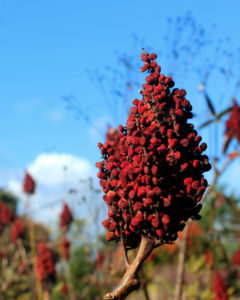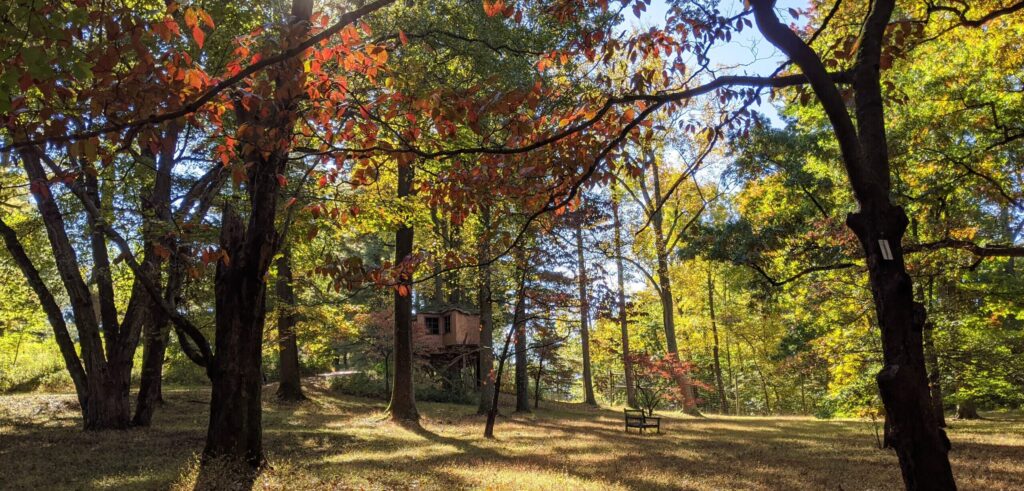When fall color appears, it is actually the disappearance of chlorophyll from leaves that allows the yellow and orange pigments to be seen.
Fall is about the waning light, the brisk morning air on our cheeks and the sight of pollinators rushing about gathering food ahead of the coming winter. Most of all, fall is about the glorious colors in our woods. Somehow, nature pairs clear amethyst skies with the vibrant golds and rubies of trees, giving us this last gift before her slumber.
Fall color is actually triggered by the lengthening of our night hours, not by cooler temperatures. This is how deciduous trees manage to start their fall show around the same time of year. Temperature, sunlight and soil moisture levels influence the intensity of the colors. Pigments such as xanthophylls (yellow) and carotenoids (orange) are already in the tree leaves but are masked by chlorophyll, so all we see is green.

Staghorn sumac seed head
When fall color appears, it is actually the disappearance of chlorophyll from leaves that allows the yellow and orange pigments to be seen. Chlorophyll is responsible for producing food for the plant and is constantly replaced during the growing season. During fall when the right night length is reached, chlorophyll production is suppressed due to an adhesion layer forming at the base of leaves. This adhesion layer blocks the passage of nutrients to the chlorophyll. A lack of chlorophyll allows leaves to express yellows and oranges. Red and purples, on the other hand, are created when sugars are trapped in the leaves. As fall progresses, the adhesion layer becomes dry and breaks. This is when we see falling leaves. Good fall color is the end result of the following conditions:
1. A good growing season with ample moisture;
2. Nighttime temperature drop, but no frost (in which case leaves will drop without coloring);
3. Calm, dry, sunny days.
Where at Tyler would we be able to see some of these colors and which trees are worth the visit? Here’s our short list:
The Tyler Parking Lot is full of fall show-offs, in particular in the range of oranges and scarlets: staghorn sumac (Rhus typhina), chokeberry (Aronia sp.), oakleaf hydrangea (Hydrangea quercifolia) and smoke bush (Cotinus coggygria). Herbaceous plants such as the blue star (Amsonia sp.) and aster create a wonderful composition as they bring in the yellows and lavenders to this color riot.
Old Arboretum is planted with maples, larches, magnolias and a ginkgo which means it is a place to see golds, apricots and soft yellows. This valley located behind the Barn contains some of the oldest trees on property planted by the Painter Brothers. Take a seat by the fruit vault and watch the world go by. You will be greeted by many squirrels and chipmunks who are busy collecting food.
On the way to the Butterfly House and a little beyond, you will come across stewartias, dogwoods and maples. Here you will find the purples, deep russets and oranges.
My friends, pack your kids or grandkids, a warm drink and put on some good hiking shoes. Come out to Tyler and enjoy the gifts that nature has placed everywhere. Breathe deeply and listen to your own footsteps as you explore the outdoors. Enjoy!







